Macrognatus: description, types, maintenance and care
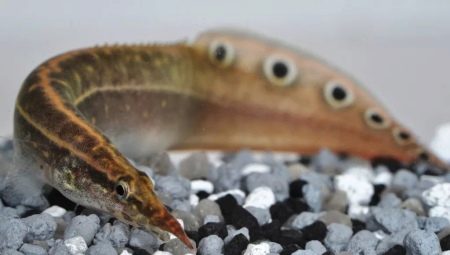
In addition to four-legged pets, aquariums with various species of fish and marine life are often placed in the home, as well as in public and office premises. Among such representatives of the marine fauna, it is worth highlighting the macrognatus, whose features and appearance determine its demand among aquarists.
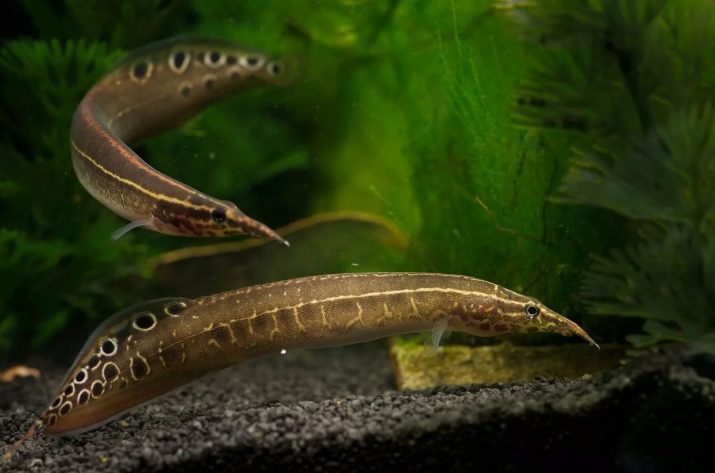
Peculiarities
The inhabitant of the water depths with such an interesting name refers to the spiny eels, which are found in the countries of Southeast Asia. In recent years, it is this type of fish that has been in high demand among humans, since it can become a real decoration of home aquariums. Macrognatus comes from the Mastacembelid family. Its external features are not much different from the ordinary prickly eel, but keeping it as an aquarium fish is quite possible, it will be enough to study its main nuances.
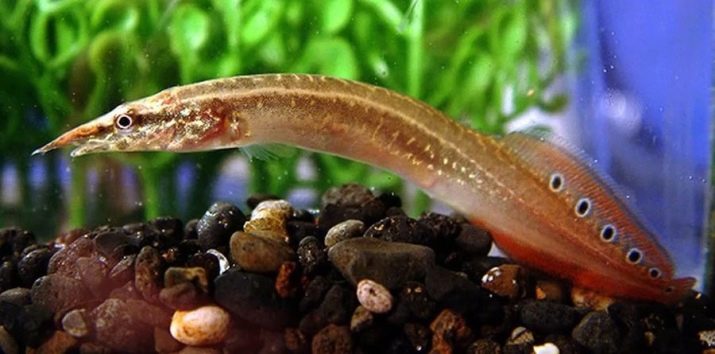
Aquarists consider macrognatus one of the most beautiful fish that can be grown and propagated in artificial reservoirs or in aquariums.
Its long and slightly elongated body is a bit like a snake, with a visually noticeable head at one end. A remarkable feature of the fish is the ability to grow in its natural environment up to a half-meter mark, however, in the closed conditions of human dwellings, fish of this type quite rarely reaches sizes of more than 25 centimeters in length. To protect itself from other predators living in the water, the macrognatus has a large number of thorns on its upper body.

In fish, sexual dimorphism is pronounced, however, unlike animals, it is the females of macrognatus that usually have more males.
Both sexes in the family have dorsal and anal fins, the presence and location of which determines the resemblance to the tail. The color of the described species of fish varies depending on the environment. Therefore, it can be brown in different shades, as well as red, pink, scarlet. The dorsal fins are additionally decorated with large dark spots with a gold rim; the fish have no pectoral fins. The abdomen of the macrognatus is usually colored more evenly, differs from the rest of the color in lighter tones of the base color.

In general, eels of this type are distinguished by their exactingness to their habitat, in light of which they are found in the wild only in certain Asian countries - Sumatra, Thailand, Sri Lanka, etc. There macrognatus inhabits small lakes and rivers. In continental conditions, they are bred only artificially.

This variety refers to individuals leading a nocturnal lifestyle - during the day, eels usually hide in thickets, under snags or simply in the ground, but do not sleep, but remain vigilant, for these purposes they have a small proboscis, which, in fact, is an olfactory body.
At night, macrognatus go in search of food. They feed on plankton, caviar of other small fish, shrimp and small crabs. It has been established that eels are able to stay outside the reservoir on land for some time, usually this interval is a maximum of 1 hour. In the aquarium, the first time the fish may show shy behavior, however, as they adapt, they can be observed more and more often. Macrognatus that are small in age can be kept in one container in small groups, but as they grow older, they may have frequent conflicts, especially in fish of the same sex.
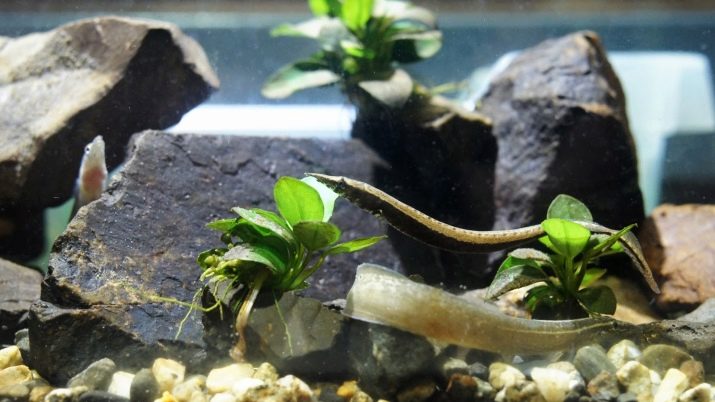
Varieties
Among the macrognatus, there are several species that can be kept in captivity.
Macrognatus coffee
This representative of the fish family will have a brown body, close to dark shades in color, while the fins of the eel will be light. Eels will remain mostly nocturnal inhabitants; they will not need a lot of bright light.
The only disadvantage of this species is its low immunity, therefore, when keeping such an eel, you will need to pay special attention to the proper condition of the aquarium.
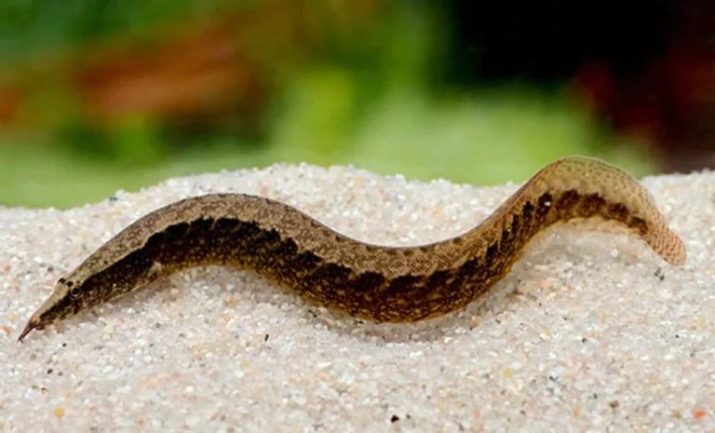
Siamese
The fish can be either small or large, in addition, the colors of this variety stand out for their diversity. The body of the macrognaus is quite dense, the spots should be located on the sides, their color will be marble. With other fish, the eel can easily coexist, but on condition that they have the same size, otherwise small neighbors will be regarded by the inhabitant as prey.

Pearl
The smallest type of macrognatus, as a rule, the body length of an adult fish will be 17 centimeters. The color of the eel should be brown with silvery flecks. The variety perfectly adapts to the closed conditions of the aquarium, and the fish also tolerates well the neighborhood with other sea, river or lake inhabitants.

Macrognatus ocellated
A miniature representative of the family, which stands out for its activity, as well as bulging eyes, which led to the name of the species. The fish feels good in large-capacity aquariums, a prerequisite is the soil in the form of refined coarse sand.
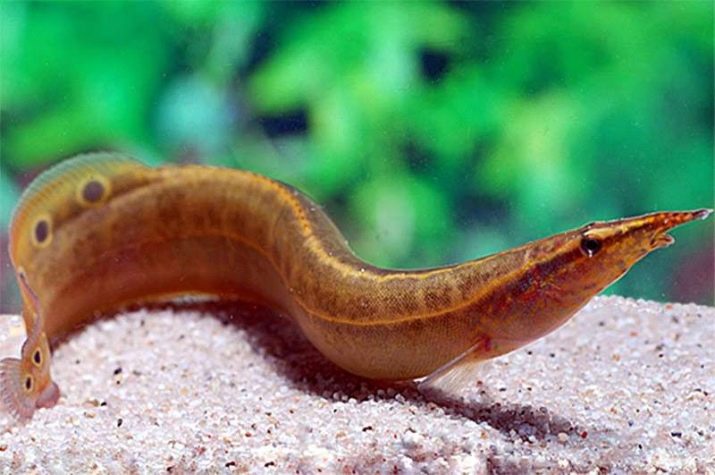
Compatibility
It will be possible to keep other fish together with macrognatus if they are not regarded by them as potential prey. Otherwise, the eel can coexist peacefully with other attractive aquarium inhabitants.
However, the aquarist should be aware that even small species of such eel have thorns, contact with which for other fish can end quite badly.

To avoid these situations, you should follow some compatibility guidelines.
- The selection of the inhabitants of the aquarium should be approached with special care. It is forbidden to acquire too active small representatives as neighbors in order to avoid cases that they will be eaten by eels.
- Keeping eel with bottom fish species is a good option. This is due to the peculiarities of their life - as a rule, they will not be too active and large. Also, sea inhabitants of large dimensions can become an alternative.
- It is worth refraining from joint breeding of cichlids with Markognatus, since the latter are distinguished by their hyperactivity.
- You can't keep a lot of eels in one tank. Such a neighborhood will lead to conflicts between males, and fish may also have quarrels regarding the territory.
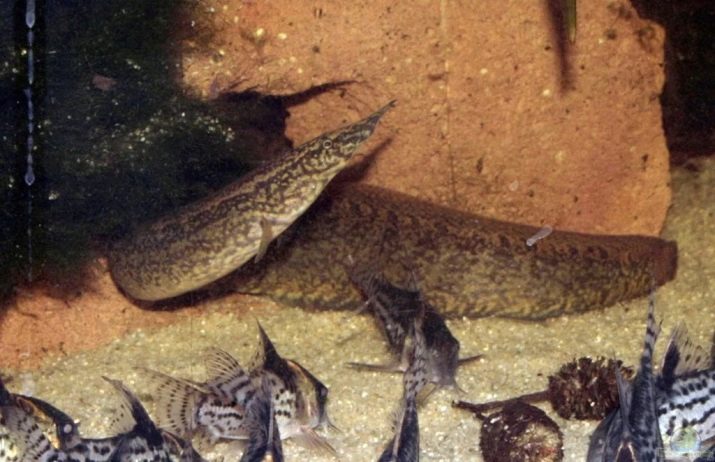
Growing conditions
In order for the fish to please its owner, and also deliver a minimum of trouble, it is important to provide it with proper conditions of detention. There are a number of requirements that must be met to provide the aquarist with healthy and attractive fish that can reproduce.
- The eel reservoir should be spacious and a lid is also required. As a rule, a 100 liter aquarium will be sufficient for one member of this family.
- The presence of soil in the container is a mandatory requirement regarding the content of eels. A suitable option is cleaned sand, which should not contain sharp components. This is due to the peculiarities of eels to bury themselves in the bottom or explore it with the proboscis.
- As for the vegetation in the aquarium, there should not be too much of it, in addition, it is better to select specimens that do not have a too developed root system. Rooting in small pots is allowed.
- In addition to vegetation, multiple stones are a must for eels. They are necessary for fish to remove natural mucus that accumulates on the body. However, before placing in the tank with fish, they must be carefully sanded to prevent injury from sharp edges.
- In the wild, macrognatus live in the coastal line, where various roots or driftwood are present. They can also be placed in the aquarium.
- It is worth monitoring the condition of the water in the aquarium, its cleaning and replacement should be carried out at least once a week, depending on the situation, maintenance may be more frequent. Contaminated liquid can cause the development of ailments in fish, when ulcers begin to form on the body. Only timely treatment will help to avoid the death of the eel. It is necessary to control the salt content in the water, add salt if necessary.
- Filtration and aeration are equally important factors that affect the lifespan of acne. The water temperature should be constant, the optimal values for fish will be values in the range from +21 to +26 degrees. The acidity indicators should be at the level of 7, while the hardness of the liquid should be no more than 15.
- In the daytime, it is best to provide the macrognatus with dim lighting, and when night comes, reduce it or turn it off altogether.
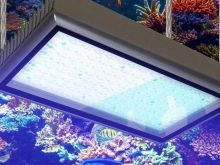
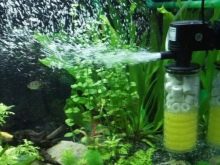

What and how to feed?
When maintaining macrognatus, special attention should be paid to its nutrition. Some breeders recommend adjusting the diet to suit the individual preferences of specific fish. As practice shows, acne can exhibit different tastes that change every day... That is why it is recommended to have several options for food in the house.
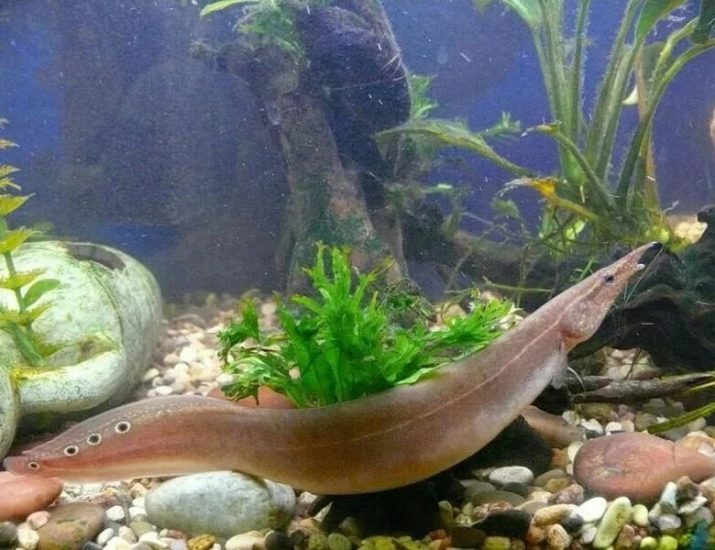
However, the main food base of the macrognatus will consist of:
- invertebrates;
- earthworms;
- small fish;
- mosquito larvae;
- crustaceans;
- fillet of cod or squid meat.
Breeders also recommend the use of vitamin supplements in the form of dry food and frozen foods.
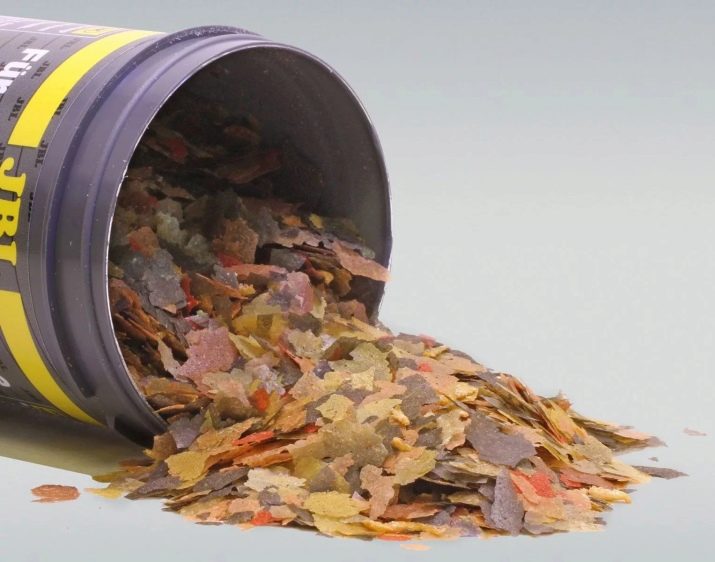
Reproduction
As a rule, acne will be ready to reproduce no earlier than 3 years later. In order to produce offspring, the aquarist should provide ideal conditions for keeping fish, as this is not so often done in captivity.
Usually, special injections are given to macrognatus to obtain offspring, which will have a stimulating effect on the fertilization process.
In this matter, you can ask for help from specialists who will conduct the first vaccination, and also point out possible "pitfalls".
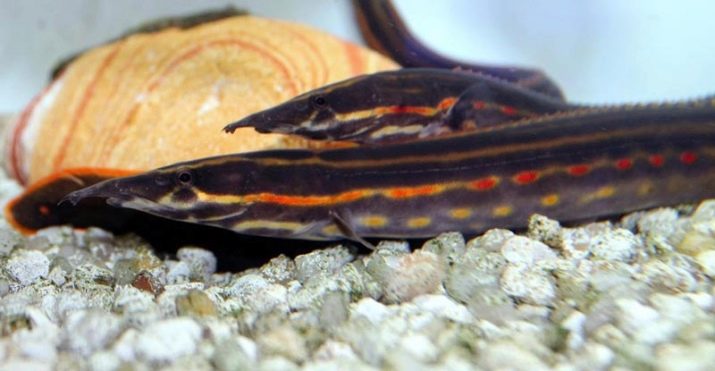
To obtain offspring at home, you will need to follow these steps:
- before the procedure, the selected individuals should be transplanted into an aquarium with a volume of at least 200-250 liters;
- further, the breeder needs to provide the macrognatus with plentiful nutrition;
- one sexually mature female is allowed to add one or two males;
- a special injection is injected into the fish directly into the spinal muscle;
- after which the aquarium must be completely isolated from sources of natural or artificial lighting.
If the fertilization process is successful, the female eel will lay at least a thousand eggs in the ground.
They independently sink to the bottom, where the process of their development will take place. For the most part, these purposes will take about 3 days. After this time, the fry should hatch into the light.
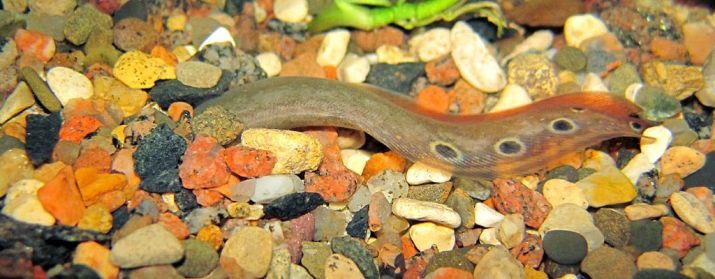
When they appear, the aquarist will need to increase the water temperature to + 27-28 degrees, in addition, the younger generation of eels will need microscopic food. For these purposes, it is recommended to use plankton or microworms.
Eels will be able to grow and develop on their own after reaching the size of at least a third of their parents, but one must take into account the differences between the female and the male in this matter.
When the fish are old enough, they can be added to a common tank with other eels and marine fauna.
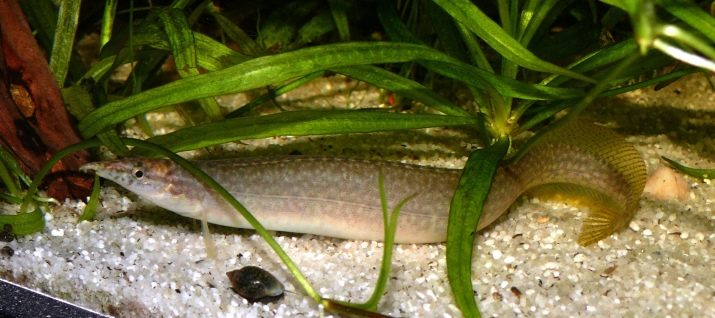
In the next video, you can watch the courtship of the macrognatus ocellata during the breeding season.








